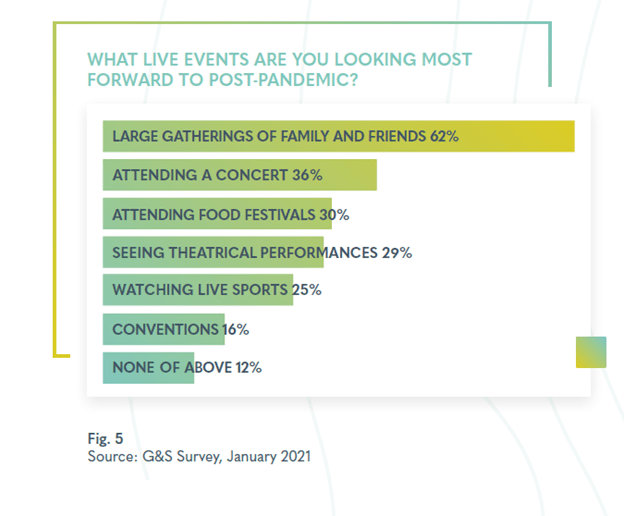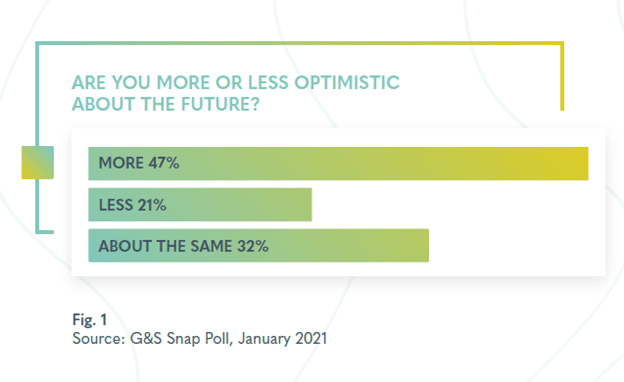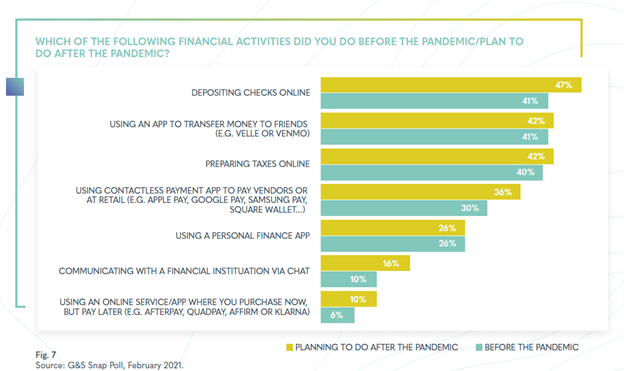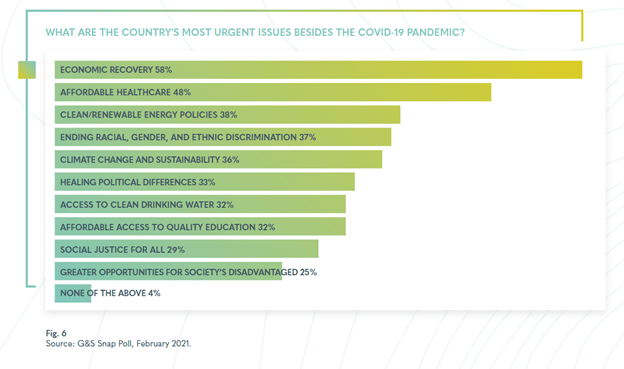Post-pandemic, communicators must integrate the online and offline experiences
In a report from G&S Business Communications, the digital transformation of the past year shows up in all kinds of ways, from trade shows to customer service.

Consumer confidence is on the rebound as the COVID-19 pandemic recedes and workers begin to return to the office.
It’s this hopeful backdrop that underpins a dire warning in G&S Business Communications’ report “The Future is Loading.” Comms must integrate the digital experience or risk losing market share.

“A year ago, as we moved into kind of the radical transformation of the way we live and work with the lockdowns and everything that happened with COVID-19, we started tracking a regular series of surveys about the trends that we were seeing in key markets,” says Steve Halsey, chief growth officer with G&S Business Communications. And so, even as 68% of consumers predict an economic recovery in the next two years, the data shows that many expect the economy to look very different from how it used to.
Halsey says that many organizations are entering 2021 much more resilient—but the rapid pace of digital transformation poses risks that cannot be ignored.
G&S says the answer is to focus on “B2I marketing,” an approach driven by audience data and insights so that brands can provide a bespoke customer experience with information, tools and offerings exactly when and where a consumer wants to have them.
“B2I in its most basic form goes back to one-to-one selling,” Halsey says. “We noticed this in the acceleration of the digital transformation in financial services. For example, a lot of people weren’t willing to go to the bank for the same things they were willing to do so for a year ago, but they expect that whether they start their interaction, a loan or anything like that, that it’ll be a completely seamless experience between their iPhone or call center or walking in that branch.”

This transformation of the B2C customer experience is also affecting how B2B marketing will continue. Consumers will expect a more seamless digital experience as they shop for business solutions and services.
“We were seeing that a lot of industries that were really heavily relying upon trade shows are now going to have to be able to deliver in a way that the individual wants to decide, even though it’s a traditional B2B buy,” Halsey says. Trade shows from now on are going to have to be able to mix in-person and virtual experiences, maybe even offering a completely digital experience.
In terms of practical application, it means that communications around a trade show activation are now months long instead of merely just the week of the event.
Leaning into purpose
G&S also says the data shows that organizations must double-down on purpose-driven communication, along with ESG and corporate social responsibility.

“People are looking for identity and purpose and someone to show them the way forward,” says Halsey. “That creates a unique opportunity for us as communicators to be in a position to drive that sense of identity, that sense of purpose all around.”
It was a trend that was already gaining momentum before the COVID-19 crisis, but the events of 2020 have placed corporate reputation and purpose firmly in the spotlight—and they are unlikely to be displaced anytime soon.
“COVID-19 had really forced a level of self-reflection and looking inward that I have not seen in three decades as a communicator,” Halsey says. Some companies looked inward and didn’t like what they found.
Halsey gives a framework to pull “purpose” from its lofty place in business rhetoric and into clear terms of action.
“From my standpoint, I kind of defined it as two fundamental questions,” Halsey says. “What is our reason for being, and then what would the world lose if we did not exist anymore?” When you align purpose with the answer to those questions, you start to understand how the concept has moved from being a buzzword to redefining how many businesses think about themselves.

Positioned for the rebound
So, how can organizations capitalize on the rising spirits of the next few months? G&S’ data shows the need to help consumers find connection.
Consumers report their No. 1 wish for post-pandemic activities is a large gathering with friends and family, showing a deep desire for in-person connection as the threat of COVID-19 subsides.

“For brands that means, help people reconnect,” says Halsey. “Realize what opportunity is there, and pursue it in a sensitive manner.” While you might be tempted into celebration, Halsey reminds brand managers and communicators that the end of the COVID-19 era has not come without grievous losses, and many will be mourning an empty seat at their kitchen table.
“You have to be respectful,” Halsey says, “because there has been a lot of loss.” The middle ground for brands is to focus on reconnection.
“After a year, people are willing to do what is going to take to try and get back to some sense of normalcy,” Halsey says.
Check out the full report from G&S Business Communications here.







